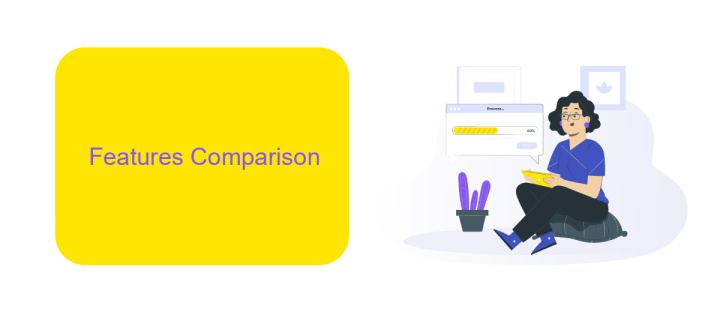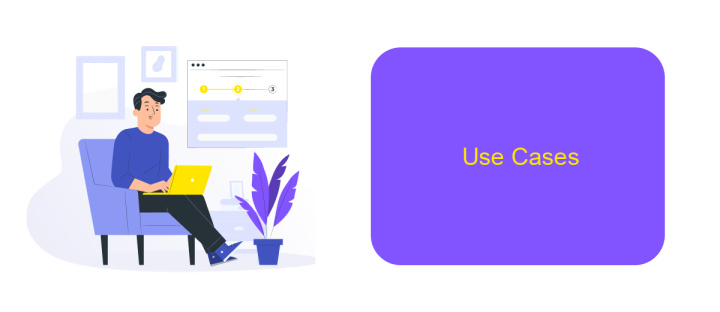Zapier Vs Bubble
When it comes to building efficient workflows and custom applications without writing a single line of code, Zapier and Bubble are two standout tools. While Zapier excels in automating tasks by connecting various apps, Bubble offers a robust platform for creating fully-functional web applications. This article delves into the strengths and weaknesses of each to help you decide which is best suited for your needs.
Introduction
In today's fast-paced digital landscape, businesses and individuals are constantly seeking efficient solutions for automating workflows and creating custom applications without extensive coding knowledge. Two popular platforms that cater to these needs are Zapier and Bubble. While Zapier focuses on seamless integrations between various apps and services, Bubble offers a robust environment for building fully functional web applications from scratch.
- Zapier: Specializes in connecting different apps to automate tasks and workflows.
- Bubble: Provides a comprehensive platform for developing web applications without coding.
- ApiX-Drive: An alternative service for setting up integrations between various platforms, offering a user-friendly interface and extensive compatibility.
Choosing between Zapier and Bubble depends on your specific needs and technical expertise. Zapier excels in simplifying the automation of repetitive tasks, making it ideal for those looking to enhance productivity quickly. On the other hand, Bubble empowers users to create complex web applications with custom functionalities. Understanding the strengths and limitations of each platform can help you make an informed decision that aligns with your goals.
Features Comparison

When comparing Zapier and Bubble, it's essential to look at their core features. Zapier excels in automation, allowing users to connect over 2,000 apps and automate workflows without any coding knowledge. Its user-friendly interface and extensive library of pre-built integrations make it a go-to tool for businesses looking to streamline operations. On the other hand, Bubble is a powerful no-code platform for building web applications. It offers a comprehensive set of features for designing, developing, and deploying apps, including a visual editor, database management, and responsive design capabilities.
Another key difference lies in their approach to integrations. Zapier focuses on connecting existing apps to automate tasks, making it ideal for businesses that rely on multiple software solutions. In contrast, Bubble allows users to build custom applications from scratch, integrating APIs as needed. For those looking to simplify the integration process, services like ApiX-Drive can be beneficial. ApiX-Drive offers a seamless way to connect various apps and automate workflows, similar to Zapier, but with additional support for custom API integrations, enhancing both platforms' capabilities.
Pricing and Plans

When comparing Zapier and Bubble, it's essential to consider their pricing and plans, as they cater to different user needs. Zapier offers a tiered pricing model, starting with a free plan that includes basic automation for individuals and small teams. As your needs grow, you can opt for premium plans that range from .99 to 9 per month, providing advanced features and higher task limits.
- Free Plan: Basic automation with limited tasks.
- Starter Plan: .99/month for enhanced automations.
- Professional Plan: /month for more complex workflows.
- Team Plan: 9/month for collaborative features.
- Company Plan: 9/month for enterprise-level automation.
Bubble, on the other hand, focuses on web application development with a different pricing structure. It offers a free plan for basic app creation, while premium plans start at /month and go up to 5/month, depending on the features and server capacity required. For those looking to streamline their integration processes further, services like ApiX-Drive can be incredibly helpful, offering easy-to-use tools for connecting various apps and automating workflows efficiently.
Use Cases

Zapier and Bubble cater to different needs in the realm of automation and app development. Zapier excels in automating workflows by connecting various apps and services, allowing users to create automated tasks without any coding knowledge. On the other hand, Bubble is a no-code platform designed for building web applications from scratch.
One of the key strengths of Zapier is its ability to streamline repetitive tasks, making it ideal for businesses looking to enhance productivity. Bubble, however, is perfect for startups and entrepreneurs who need to launch a fully functional web application quickly and efficiently.
- Automating email marketing campaigns with Zapier
- Building a custom CRM system with Bubble
- Integrating various apps using ApiX-Drive
- Creating a marketplace platform with Bubble
Ultimately, the choice between Zapier and Bubble depends on your specific needs. If you require seamless integrations and workflow automation, Zapier is the go-to solution. However, if your goal is to build a comprehensive web application, Bubble offers the necessary tools and flexibility to bring your vision to life.
# Conclusion
In conclusion, both Zapier and Bubble offer unique strengths for different types of users and projects. Zapier excels in its ability to seamlessly integrate various applications and automate workflows without the need for coding skills. It is an ideal choice for businesses looking to enhance productivity through efficient automation. On the other hand, Bubble provides a robust platform for creating fully functional web applications with a visual programming approach, making it a powerful tool for those who want to build custom solutions from scratch.
For users seeking to optimize their integration processes further, ApiX-Drive can be an excellent addition to their toolkit. ApiX-Drive offers a user-friendly interface for setting up integrations and automating data transfers between different services, complementing the capabilities of both Zapier and Bubble. By leveraging these tools, businesses can streamline their operations, reduce manual tasks, and focus on growth and innovation.
FAQ
What are the primary use cases for Zapier and Bubble?
Can Zapier and Bubble be used together?
Which platform is better for non-developers?
Is there an alternative to Zapier for automation and integrations?
Can I build a fully functional web app using only Bubble?
Strive to take your business to the next level, achieve your goals faster and more efficiently? Apix-Drive is your reliable assistant for these tasks. An online service and application connector will help you automate key business processes and get rid of the routine. You and your employees will free up time for important core tasks. Try Apix-Drive features for free to see the effectiveness of the online connector for yourself.

